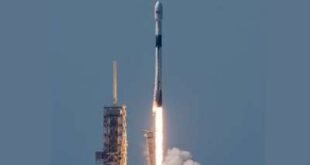
India’s Chandrayaan-3 mission has achieved a significant milestone by successfully obtaining the first-ever scientific data from the Moon’s unexplored South Polar region. The mission’s thermal probe, known as ChaSTE (Chandra’s Surface Thermophysical Experiment), deployed on the Vikram lander, has recorded temperature variations at the lunar surface, near-surface, and deeper levels.
The Indian Space Research Organisation (ISRO) announced that ChaSTE has been instrumental in capturing temperature profiles of the lunar topsoil around the pole. The experiment aims to better understand the thermal behavior of the Moon’s surface and provide insights into the variations in temperature, considering the absence of an atmosphere.
ChaSTE, equipped with ten high-precision thermal sensors, was designed to penetrate the lunar surface to a depth of up to 10 cm. This probing mechanism has revealed a surprising finding: the temperature recorded is notably higher than anticipated. Instead of the projected 20-30 degrees Celsius, the surface temperature on the Moon’s south pole was found to be 70 degrees Celsius.
Science Minister Jitendra Singh highlighted the significance of this achievement, stating that the data collected from Chandrayaan-3 could potentially provide essential information about the Moon’s atmosphere, soil, and minerals. He added that the research could have worldwide implications for the scientific community.
The lunar surface experiences substantial temperature fluctuations between lunar day and night cycles. The porous lunar topsoil, ranging from 5 to 20 meters in thickness, acts as an efficient insulator, contributing to significant temperature differences between the surface and the interior of the regolith.
Vikram lander’s successful touchdown on August 23 in the lunar South Polar region marked a historical achievement for India. The lander’s location was subsequently named Shiv Shakti point. Chandrayaan-3 has already accomplished two of its three key objectives: achieving a soft landing and deploying a rover on the lunar surface. The ongoing in-situ scientific experiments are expected to yield valuable insights into the Moon’s environment and characteristics.
Sources By Agencies
 Digital Scoop India Official Platform of Digital Scoop India Featuring Latest & Best News #Articles #Bytes #Entertainment #DigitalScoopMagazine
Digital Scoop India Official Platform of Digital Scoop India Featuring Latest & Best News #Articles #Bytes #Entertainment #DigitalScoopMagazine


